COMPANY
History


| 1883 | Bunjiro Tobishima founded Tobishima-gumi, contracted to demolish Fukui Castle |
|---|---|
| 1889 | Took part in bid for its first government job as civil engineering contractor |
| 1905 | Contracted to construct Kyoto Electric’s Nakao power plant (Fukui Prefecture) as its first hydroelectric power plant |
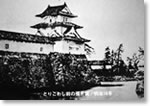
Demolition of Fukui Castle (Fukui Prefecture, 1883)
| 1913 | Contracted to build an electric railway between Fukui and Oono, expanding into railway construction |
|---|---|
| 1915 | Contracted to undertake the Kinu River Improvement Project, expanding to the Kanto region |
| 1916 | Tobishima-gumi Corporation (representative director Bunkichi Tobishima) founded with \100,000 in capital, headquarters located in Toyoshimanaka-cho, Fukui City |
| 1920 | Tobishima-gumi Corporation transformed into a limited partnership company with \1 million in capital |
| 1922 | Opened the Tokyo office at 2-chome, Iidamachi, Kojimachi-ku, Tokyo, which was used for the expansion of business to cover the whole country |
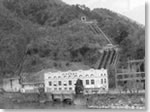
Kansai Electric Power Yomikaki Power Plant (Nagano Prefecture, 1923)
Designated National Important Cultural Property in 1994
(1st operating industrial facility)
| 1928 | Transferred Tokyo office to Suidomachi, Koishikawa-ku, Tokyo |
|---|---|
| 1929 | Tobishima-gumi's capital increased to \3 million |
| 1937 | Annual contracted amount surpassed \30 million, an industry record |
| 1940 | Moved headquarters from Fukui-shi to Kudan, Kojimachi-ku, Tokyo |
| 1946 | Tobishima-gumi applied for rehabilitation under the Corporate Reorganization Law, and was dissolved |
| 1947 | Tobishima Civil Engineering (representative director Hitoshi Tobishima) was founded with \3 million in capital |
| 1960 | Shares first traded over-the-counter on the Tokyo Stock Exchange, listed on the first section the following year |
| 1963 | Celebrated 80th anniversary of the Company's founding, capital totaled \2.0 billion |
| 1965 | Changed company name to Tobishima Corporation to cast off the image of an exclusive focus on civil engineering |
| 1967 | Constructed new headquarters building in Kudan, Tokyo |
| 1972 | Introduced computers |
| 1973 | Celebrated 90th anniversary of Company's founding, capital totaled \5.25 billion |
| 1975 | Launched full-scale overseas operations with the establishment of offices in various East Asian locations, such as Hong Kong |
| 1978 | Introduced new corporate logo |
| 1982 | Constructed Seikan Tunnel |
| 1983 | Celebrated 100-year anniversary of founding Moved headquarters to new headquarters building (Sanban-cho, Tokyo) |
| 1986 | Won the Excellence Prize for the Second National Theater (New National Theater, Tokyo) International Competition |
| 1987 | Completed new Technology Research Center (Chiba Prefecture) Technological examination of high-rise steel frame concrete structure system (Skyrib RC25) by the Building Center of Japan completed |
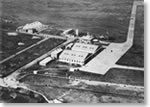
Haneda Airfield
(Tokyo, 1931)
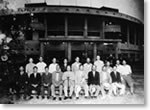
Former Korakuen Baseball Stadium
(Tokyo, 1938)
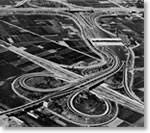
Tomei Expressway, Atsugi Interchange
(Kanagawa Prefecture, 1968)
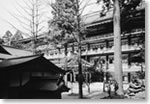
Eiheiji (Eihei Temple) Kisshokaku Hall
(Fukui Prefecture, 1971)

Toei Shinjuku Line, Upper Kudan Section
(Tokyo, 1977)
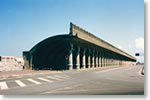
Port of Wakkanai Seawall/Breakwater
(Hokkaido, 1980)
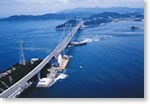
Onaruto Bridge between the islands of Honshu and Shikoku
(Tokushima Prefecture, 1981)
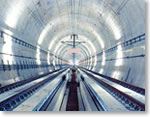
Seikan Tunnel, Sanyoushi section
(Aomori Prefecture, 1982)
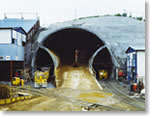
Narita Airport Tunnel
(Chiba Prefecture, 1982)
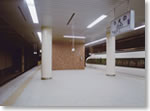
Tohoku Shinkansen, north underground section of Ueno Station
(Tokyo, 1985)
| 1989 | Completed and opened Kanagawa Science Park (KSP), which included the first incubator function in Japan |
|---|---|
| 1990 | Adopted new uniform designed by Kansai Yamamoto |
| 1991 | Completed the first indoor race track in Japan using the Strarch roofing system (developed by the Australian company Strarch), an astylar (column-less) large-space construction method |
| 1992 | Completed the 33-storey residential building Suma Park Hills Tower |
| 1993 | Celebrated 110th anniversary of the Company's founding |
| 1995 | Received order for the main portion of the Surikamigawa Dam, a large-scale rock-filled dam |
| 1997 | Constructed the section of the undersea tunnel of the Tokyo Bay Aqua Line on the Kawasaki side of the Kawasaki Man-Made Island |
| 1999 | Whole company obtained ISO9000 series (international quality standard) certification |
| 2000 | The group was selected for PFI business (parking lot construction) in Sabae City, Fukui Prefecture |
| 2002 | All offices obtained ISO14001 certification |
| 2011 | Moved the main office to Kanagawa Science Park (KSP) in Kawasaki City |
| 2013 | Celebrated 130th anniversary of Company's founding |
| 2017 | Moved the main office to Minato-ku, Tokyo
Published "Promote corporate transformation and evolve into "New Business Contractor"" as a management vision |

Kanagawa Science Park (KSP)
(Kanagawa Prefecture, 1989)
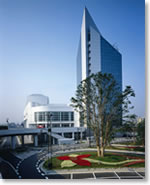
Kawaguchi Cultural Center
(Saitama Prefecture, 1990)
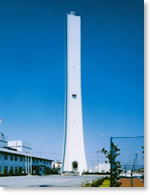
Kansai Electric Power, Nanko Thermal Power Plant and Super-Tall Chimney
(Osaka Prefecture, 1990)
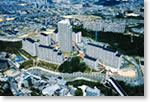
Suma Park Hills
(Hyogo Prefecture, 1994)
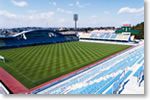
Yamaha Stadium (former Jubilo Iwata Stadium)
(Shizuoka Prefecture, 1995)
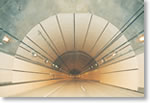
Tokyo Bay Aqualine, Kawasaki Man-Made Island (South Section)
(Kanagawa Prefecture, 1997)

Eiheiji Dam
(Fukui Prefecture, 2002)
| 2019 | Formulated a medium-term five-year plan based on the basic policy of establishing the foundation of "New Busines Contractor" |
|---|---|
| 2024 | Established a holding company, Tobishima Holdings Co., Ltd., through a sole stock transfer and listed it on the Tokyo Stock Exchange Prime Market. |
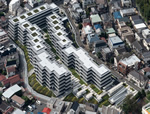
Tokyo Fire Department Honmachi Standby Lodging
(Tokyo, 2020)
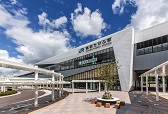
Hokuriku Shinkansen “Echizen Takefu Station”
(Fukui, 2023)